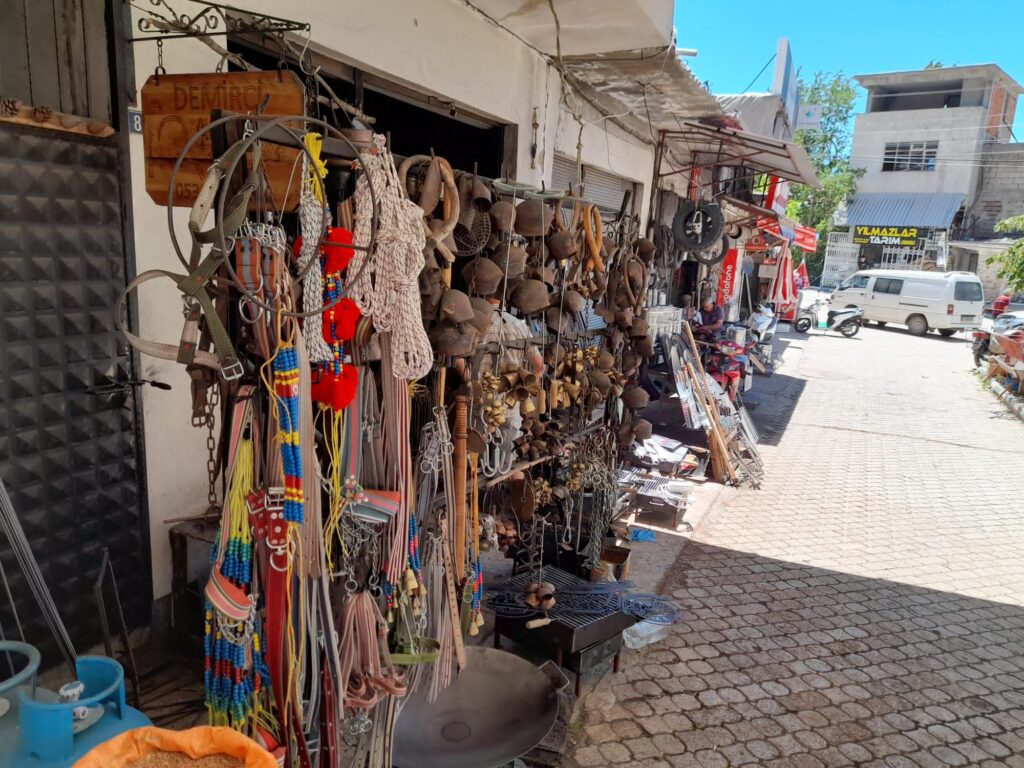The tiny town of Sutlegen

For most foreign tourists staying in Kalkan, Sutlegen is just another small village on the drive to Elmali, the largest Ottoman town in the southwest area of Turkiye. This larger, more popular, town is named after the apples (elma) it produces, and famed for its well preserved wooden houses (some from the 17th century), and its 16th century mosque complex, with hand-painted tiles rivalling those in Istanbul’s grand mosques.
Other travellers might also pass through Sutlegen on their way to Green Lake, a site of pilgrimage for many Turks who travel there to drink its healing water, and where semi-nomads still live in tents near the lake. But to drive past this tiny village, in my view, is to miss out.
For us, the drive from Kalkan to Sutlegen is a delight in itself, wonderfully scenic and, at under an hour, relatively short. But in truth, there is nothing particularly aesthetic about this town.
Yet we always stop here because for us, its attraction lies elsewhere.
What Sutlegen lacks in aesthetics it makes up for in atmosphere. This is a working village that’s not on the tourist map, and as such, a marvellous place to watch rural Turkish life play out.
One of the highlights here are the two blacksmith shops, their outdoor walls hung with an eclectic array of rural essentials from hand-forged tools for working the land, to an array of goat bells, leather straps, ropes, chains, iron BBQs, sac griddles – the large, wood-fired metal domes for making pancakes (gozleme) so beloved of both Turks and tourists, and much more.
While these shops have a rustic charm on the outside, inside is like stepping into a living museum. Yet far from being stage managed, these are traditional forges still operating in many regions in rural Turkey.
Inside the shops the blacksmiths are happy to let us watch them heat the metal in the flames and use age-old techniques to hammer and twist the white hot metal into everyday items. It’s clear they are proud to have an audience, and have their photos taken. On our last visit we were even invited to ‘have a go’ for the camera.


Alongside these forges sits the village tea garden. Most towns and villages have a tea garden, and many in the more rural areas are frequented by elderly gents playing backgammon, or simply socialising over cups of Turkish tea (cay).
This tea garden is neither grassed nor planted, but paved with a small man-made waterfall and watercourse running through it. Being on a main route it attracts a more diverse group of customers. Both workers and locals stop here for refreshment.
We love to sit here with a drink and watch the world go by. The weak Turkish tea is always refreshing after the journey and the snacks are good. And sometimes, even though we’ve been coming to Turkiye for many years, there are a few surprises.
On one such occasion a large tea urn in the ‘garden’ was being used to make hot drinks out of what looked like chunks of white resin. Intrigued, we tried a cup of this frothy, milky looking drink, with its decidedly intense taste. This was salep we later discovered, a traditional Turkish beverage usually consumed in the winter, made of powdered orchid roots, milk and sugar.
On another occasion, we arrived and noticed a group of workmen tucking into bowls of ice cream. It was a hot day and this seemed a perfect idea. I thought it might be snow ice cream (ice cream made from snow is famous in this area). We chose our flavours and waited eagerly. When it arrived we took one mouthful and looked at each other, neither of us able to swallow it given the somewhat ‘surprising’ flavour and smell.
We later learned it was ‘burnt ice cream’ (yaniksi dondurma). This is made from a combination of the particularly fatty milk of goats fed on wild thyme growing exclusively on the Korkuteli Plains of southwest Turkiye, and from salep flour made from wild orchid roots. Due to the fatty nature of the milk it easily burns and sticks to the pot so the chef must stir it constantly and know exactly how much to burn for the desired flavour. All of this is said to give the ice cream its distinctively sharp, smoky flavour.
It is a long-held tradition in the region around Korkuteli, especially among the elderly, to eat the ice cream after breakfast. Outside of this area it appears few Turks are aware of its existence, and as with many old traditions, its popularity is dying out.
We therefore feel privileged to have tried it, but we definitely won’t be ordering it again!
To get to Sutlegen from Kalkan head for the D400 and at the traffic lights follow the sign for Islamlar. From there take the road to Elmali.
To read our blog on how to travel to Sutlegen, click here
